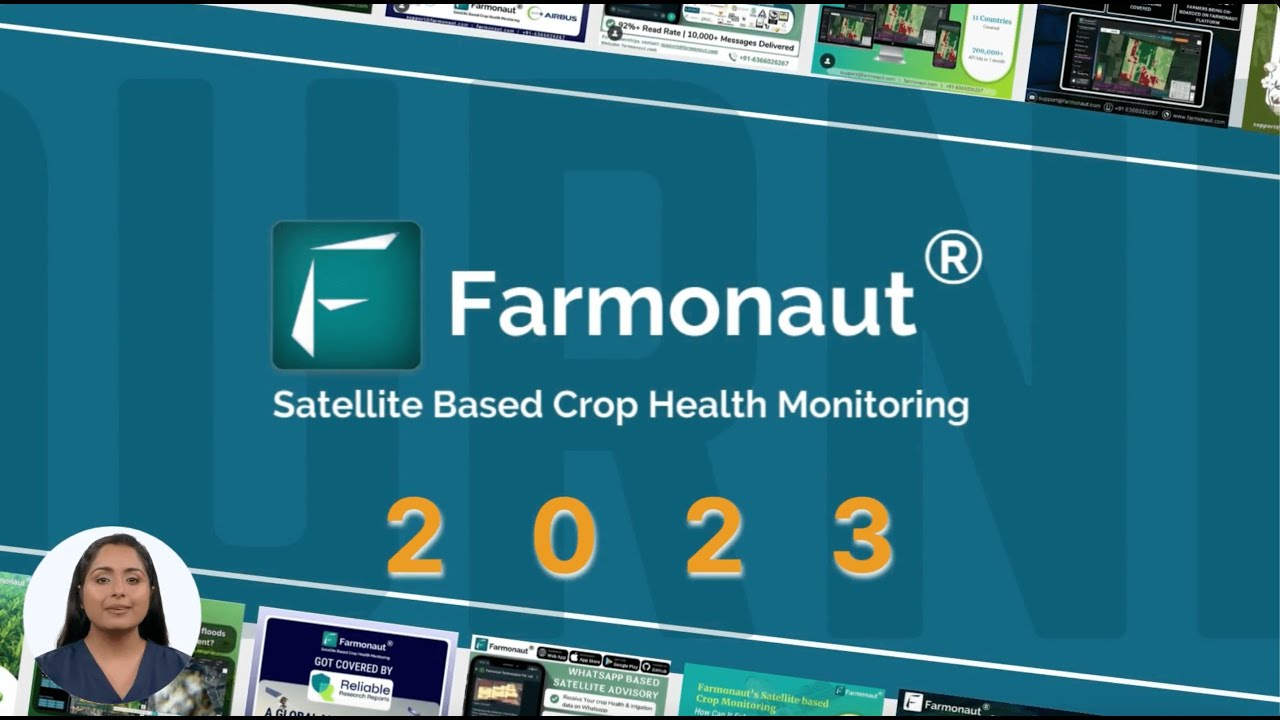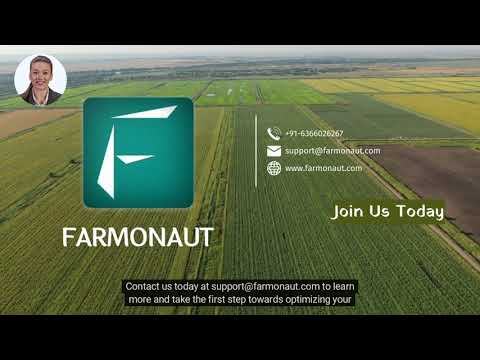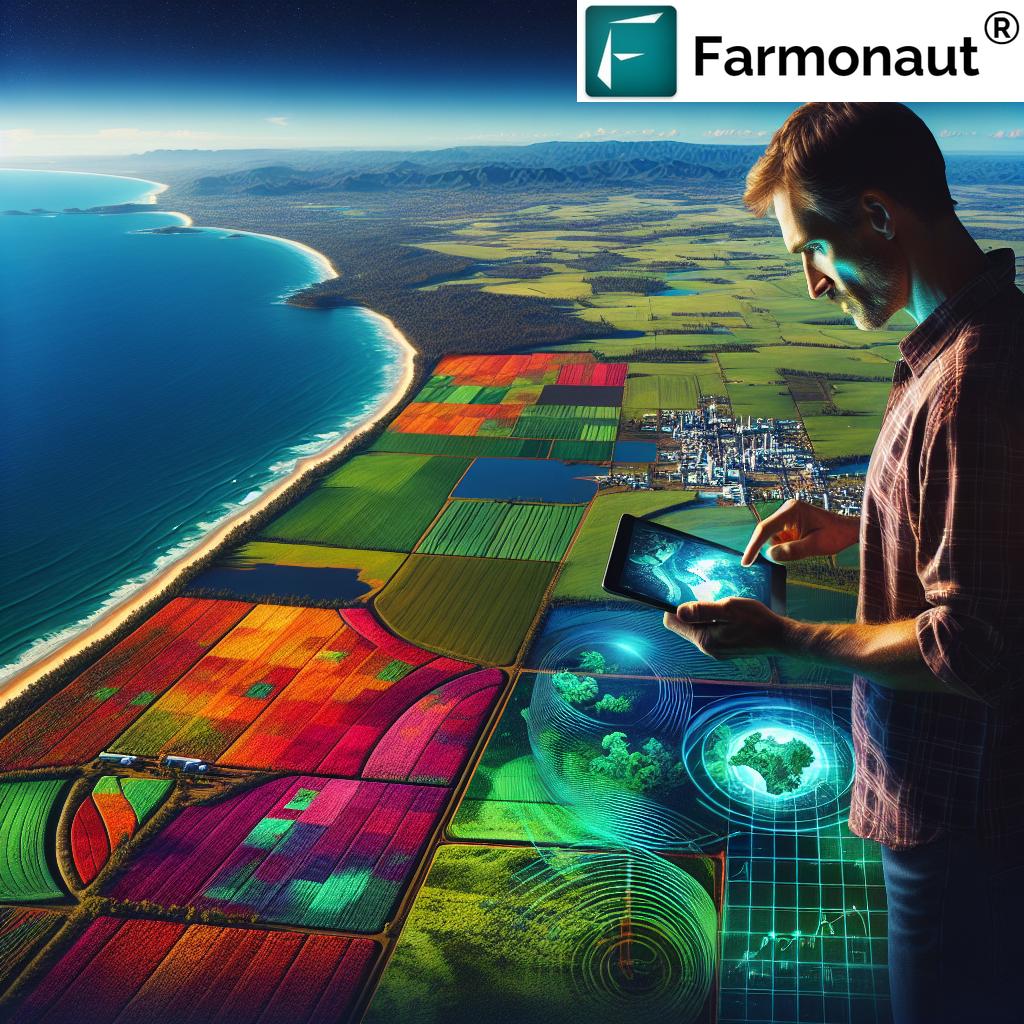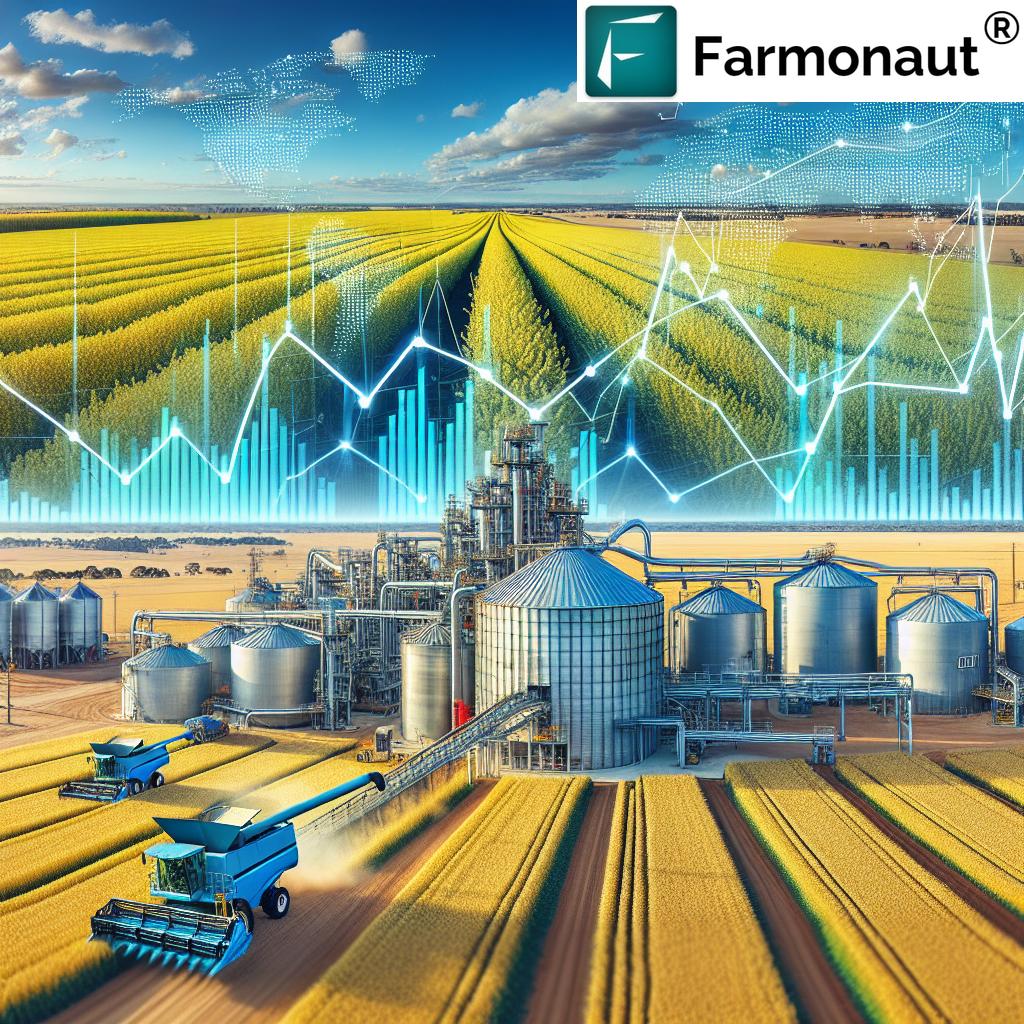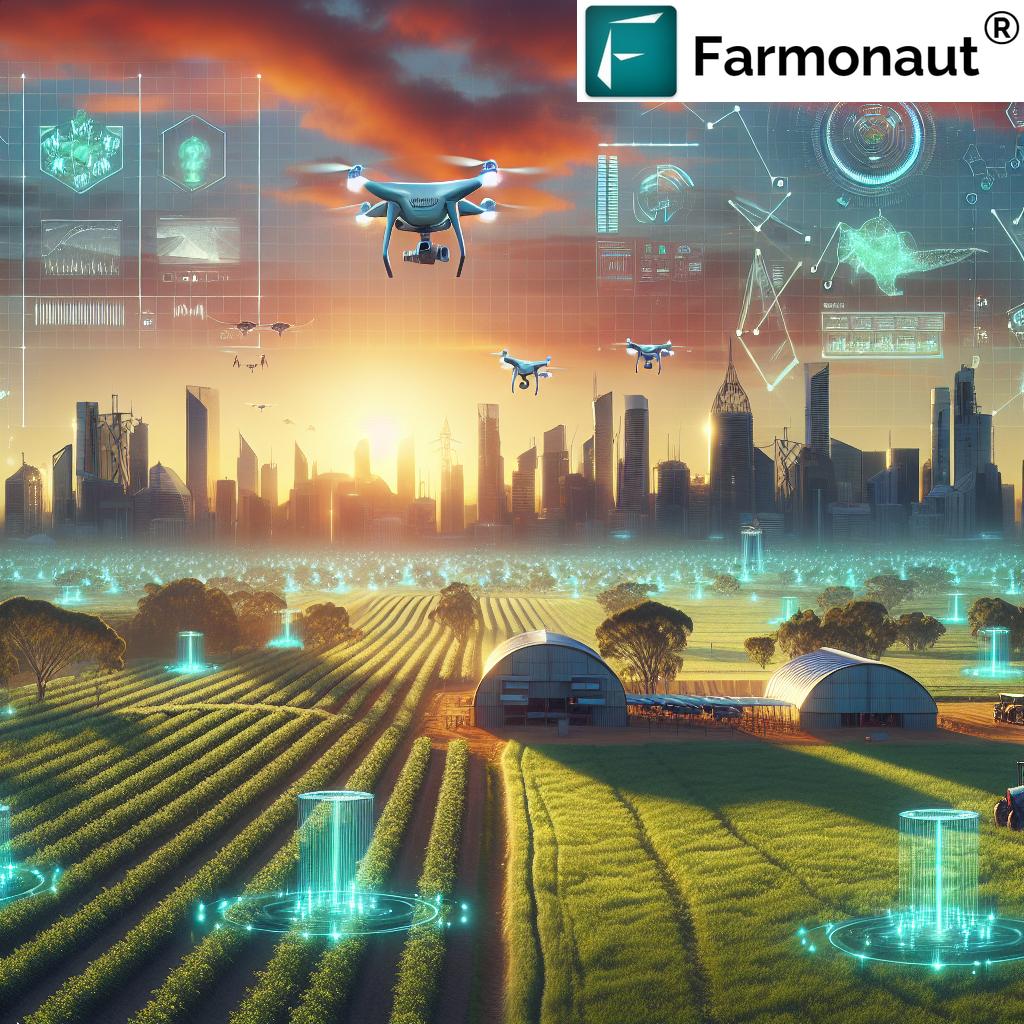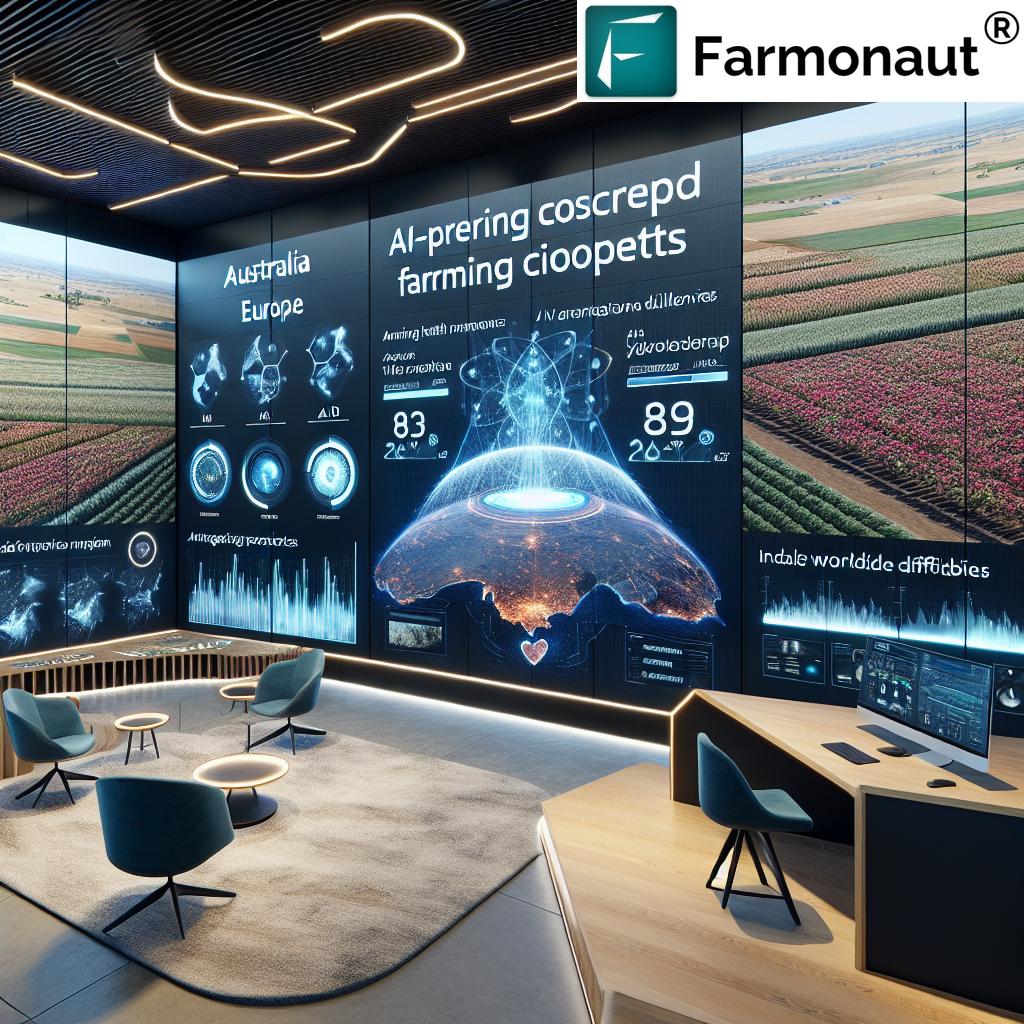Revolutionary Vertical Farming in Melbourne: Stacked Farm’s Sustainable Future of Fresh Produce
“Stacked Farm’s Melbourne facility will produce 3.4 million kg of fresh herbs and leafy greens annually by 2026.”
Welcome to the future of agriculture in Australia! We’re excited to share groundbreaking news that’s set to revolutionize the way we grow and consume fresh produce in Melbourne and beyond. At Farmonaut, we’re always on the lookout for innovative farming solutions that align with our mission of making precision agriculture accessible and sustainable. Today, we’re thrilled to introduce you to Stacked Farm’s latest venture – a state-of-the-art vertical farming facility that’s about to change the game in controlled environment agriculture.
The Dawn of a New Era in Sustainable Food Production
As we step into 2025, Melbourne is gearing up to host a marvel of modern agriculture. Stacked Farm, a pioneer in controlled environment farming, has announced plans for a $150 million automated agriculture facility in the Melbourne Airport precinct. This isn’t just another farming project; it’s a glimpse into the future of sustainable food production that promises to redefine how we think about fresh produce.
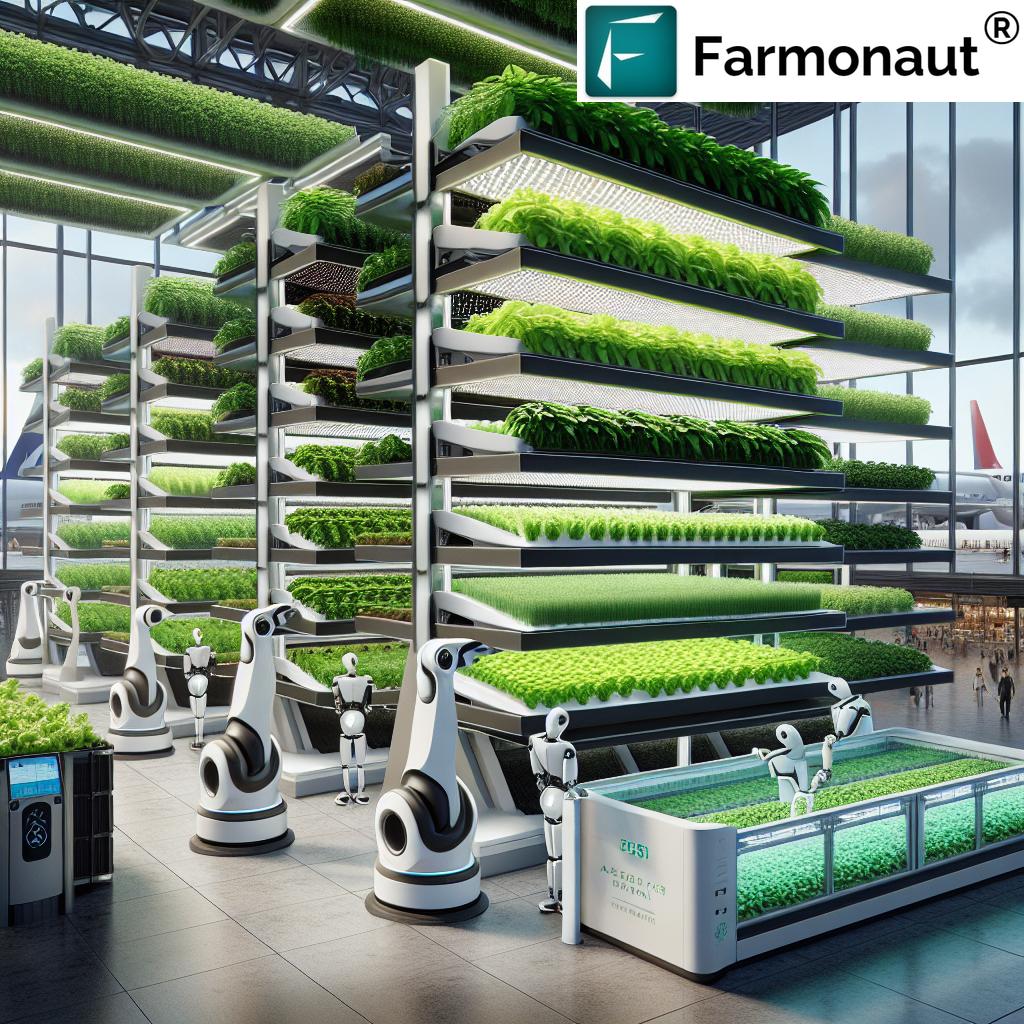
Set to open its doors in 2026, this cutting-edge facility will span an impressive 10,000 square meters, showcasing the potential of vertical farming in urban environments. But what makes this project truly revolutionary? Let’s dive into the details and explore how Stacked Farm is set to transform the agricultural landscape in Victoria and beyond.
Unveiling the Power of Controlled Environment Farming
At the heart of Stacked Farm’s innovation is the concept of controlled environment farming. This advanced approach to agriculture allows for precise control over growing conditions, resulting in unparalleled efficiency and productivity. Here’s what sets this facility apart:
- Fully Automated Systems: With only 15 staff members and 25 pieces of proprietary robotics, the facility maximizes efficiency while minimizing labor costs.
- Climate-Controlled Environment: By creating optimal growing conditions year-round, crops are shielded from adverse weather, ensuring consistent quality and yield.
- Zero-Waste Water System: A closed-loop water system significantly reduces water usage compared to traditional farming methods.
- Green Energy Powered: The entire facility will run on renewable energy sources, setting a new standard for sustainable agriculture.
These innovative features combine to create a farming system that’s not only highly productive but also environmentally responsible. It’s a perfect example of how technology and sustainability can work hand in hand to address the challenges of modern food production.
A Bounty of Fresh, Local Produce
The numbers speak for themselves. Once operational, Stacked Farm’s Melbourne facility is projected to produce an astounding 3.4 million kilograms of fresh herbs and leafy greens annually. This includes a variety of crops such as:
- Cos lettuce
- Mixed leaf lettuces
- Spinach
- Rocket
- Basil
- And more!
What’s even more impressive is the speed at which these crops can be grown. Traditional farming methods typically require 45 to 80 days for leafy greens to reach maturity. In contrast, Stacked Farm’s controlled environment allows for significantly faster crop cycles, with produce ready for harvest in just 16 to 31 days.
This rapid growth cycle, combined with the facility’s proximity to Melbourne’s urban center, means fresher produce with reduced food miles. It’s a win-win situation for both consumers and the environment.
Revolutionizing the Supply Chain
One of the most exciting aspects of this project is its potential to transform the fresh produce supply chain in Victoria and beyond. By locating the facility within the Melbourne Airport precinct, Stacked Farm is strategically positioning itself to minimize transportation time and costs.
This innovative approach to farming brings production closer to consumers, reducing the need for long-distance transportation and storage. The result? Fresher produce that retains more of its nutritional value and flavor, all while reducing the carbon footprint associated with traditional supply chains.
At Farmonaut, we’re particularly excited about the potential for this type of innovative farming to complement our satellite-based crop monitoring services. While we focus on helping traditional farmers optimize their operations through precision agriculture, projects like Stacked Farm’s showcase how technology can be leveraged to create entirely new farming paradigms.
The Economic Impact: Jobs, Investment, and Growth
Beyond its agricultural innovations, Stacked Farm’s Melbourne project represents a significant economic investment in Victoria’s future. The $150 million facility is financed through a mix of debt and equity, with notable investments from Magnetar Capital, a US-based alternative assets manager.
This investment not only creates jobs during the construction phase but also establishes long-term employment opportunities in the high-tech agricultural sector. As the project progresses, it’s likely to attract further investment and innovation to the region, potentially establishing Melbourne as a hub for AgTech advancement in the Southern Hemisphere.
Sustainability at the Core
“The $150 million vertical farming project in Melbourne’s airport precinct will be powered entirely by green energy.”
Sustainability isn’t just a buzzword for Stacked Farm; it’s a fundamental principle that guides every aspect of their operation. Let’s break down some of the key sustainability features of this revolutionary facility:
- Green Energy: By powering the entire facility with renewable energy, Stacked Farm is setting a new standard for sustainable agriculture.
- Water Conservation: The zero-waste water system dramatically reduces water usage compared to traditional farming methods, addressing one of agriculture’s most pressing environmental challenges.
- Reduced Carbon Footprint: By minimizing transportation needs and optimizing resource use, the facility significantly reduces the carbon emissions associated with food production.
- Pesticide-Free Growing: The controlled environment eliminates the need for harmful pesticides, resulting in cleaner, healthier produce.
These sustainability initiatives align perfectly with Farmonaut’s mission to promote environmentally responsible farming practices. While we focus on helping traditional farmers reduce their environmental impact through precision agriculture, Stacked Farm’s approach demonstrates how controlled environment farming can take sustainability to new heights.

Comparing Vertical Farming to Traditional Methods
To truly appreciate the revolutionary nature of Stacked Farm’s approach, it’s helpful to compare it directly with traditional farming methods. Here’s a detailed breakdown:
| Farming Aspect | Vertical Farming (Stacked Farm) | Traditional Farming |
|---|---|---|
| Annual Production (kg) | 3.4 million (projected) | Varies widely, generally lower per square meter |
| Growing Time (days) | 16-31 | 45-80 |
| Water Usage (liters per kg) | Significantly reduced (exact figures TBC) | High, varies by crop and region |
| Energy Source | 100% Green Energy | Often relies on fossil fuels |
| Land Use (m² per kg) | Minimal, vertically stacked | Extensive horizontal space required |
| Food Miles | Minimal (located near urban centers) | Often high, depending on distribution |
| Pesticide Use | None required | Often necessary |
| Yield Consistency | High (controlled environment) | Variable (weather-dependent) |
As this comparison shows, vertical farming offers significant advantages in terms of efficiency, resource use, and environmental impact. However, it’s important to note that traditional farming still plays a crucial role in our food system, especially for crops that aren’t well-suited to vertical farming methods.
At Farmonaut, we believe that the future of agriculture lies in a combination of innovative approaches like vertical farming and optimized traditional farming practices enhanced by precision agriculture technologies. Our satellite-based monitoring services can help traditional farmers achieve some of the efficiency gains seen in vertical farming, bridging the gap between these two approaches.
The Role of Technology in Modern Agriculture
The Stacked Farm project in Melbourne is a testament to the transformative power of technology in agriculture. From proprietary robotics to advanced climate control systems, every aspect of the facility leverages cutting-edge technology to optimize production.
This aligns closely with Farmonaut’s approach to agricultural innovation. While we focus on satellite-based technologies for monitoring and managing traditional farms, the principles of data-driven decision-making and technological optimization remain the same.
Here are some key technological advancements that are shaping the future of agriculture:
- Artificial Intelligence and Machine Learning: These technologies are being used to optimize growing conditions, predict crop yields, and manage resources more efficiently.
- Internet of Things (IoT): Sensors and connected devices allow for real-time monitoring and adjustment of growing conditions.
- Robotics and Automation: As demonstrated by Stacked Farm, robotics can significantly increase efficiency and reduce labor costs in agriculture.
- Satellite Imagery and Remote Sensing: This is where Farmonaut’s expertise lies, using satellite data to provide valuable insights for crop management and decision-making.
By embracing these technologies, both vertical farms like Stacked Farm and traditional farms can significantly improve their productivity, sustainability, and profitability.
The Future of Agriculture in Australia
As we look to the future, it’s clear that projects like Stacked Farm’s Melbourne facility represent a new frontier in Australian agriculture. However, this doesn’t mean traditional farming will become obsolete. Instead, we’re likely to see a diversification of agricultural approaches, with vertical farming complementing rather than replacing traditional methods.
Here’s how we envision the future of agriculture in Australia:
- Urban Farming Hubs: More cities may follow Melbourne’s lead, establishing vertical farms to provide fresh, locally-grown produce to urban populations.
- Tech-Enhanced Traditional Farming: Traditional farms will increasingly adopt precision agriculture technologies, like those offered by Farmonaut, to optimize their operations and reduce environmental impact.
- Sustainable Practices: Regardless of the farming method, sustainability will be a key focus, with an emphasis on water conservation, renewable energy use, and reduced chemical inputs.
- Consumer-Driven Innovation: As consumers become more conscious of food miles and environmental impact, we’ll likely see more demand for locally-grown, sustainably-produced food.
This diversified approach to agriculture will help ensure food security, reduce environmental impact, and create new economic opportunities in both urban and rural areas.
How Farmonaut Complements Innovative Farming Solutions
While Stacked Farm is revolutionizing urban agriculture with its vertical farming technology, Farmonaut continues to innovate in the field of precision agriculture for traditional farming methods. Our satellite-based farm management solutions offer valuable tools for farmers looking to optimize their operations and embrace sustainable practices.
Here’s how Farmonaut’s technologies can benefit farmers:
- Crop Health Monitoring: Our satellite imagery provides real-time insights into crop health, helping farmers identify and address issues promptly.
- Resource Optimization: By providing detailed data on soil moisture and vegetation health, we help farmers make informed decisions about irrigation and fertilizer use.
- Yield Prediction: Our AI-powered analytics can help farmers forecast crop yields, enabling better planning and resource allocation.
- Weather Insights: Access to accurate, localized weather forecasts helps farmers prepare for and mitigate weather-related risks.
By leveraging these tools, traditional farmers can achieve some of the efficiency gains seen in controlled environment farming, bridging the gap between these two approaches.
The Impact on Consumers and the Food Industry
The rise of innovative farming solutions like Stacked Farm’s vertical farming facility and the continued advancement of precision agriculture technologies offered by Farmonaut are set to have a significant impact on consumers and the broader food industry.
For consumers, these advancements mean:
- Fresher Produce: With reduced transportation times and optimized growing conditions, consumers can expect fresher, more flavorful produce.
- Year-Round Availability: Controlled environment farming can provide consistent supply of seasonal produce throughout the year.
- Reduced Environmental Impact: Consumers can feel good about purchasing produce grown using sustainable methods and technologies.
- Potentially Lower Prices: As farming becomes more efficient, these cost savings may be passed on to consumers.
For the food industry, these changes herald:
- More Reliable Supply Chains: With less dependence on weather conditions and reduced transportation needs, supply chains can become more stable and predictable.
- New Product Opportunities: Consistent, high-quality produce opens up new possibilities for value-added products and premium offerings.
- Improved Traceability: Advanced farming technologies enable better tracking of produce from farm to table, enhancing food safety and consumer trust.
Frequently Asked Questions
As we explore this exciting development in vertical farming, you might have some questions. Here are answers to some frequently asked questions:
- Q: How does vertical farming compare to traditional farming in terms of sustainability?
A: Vertical farming typically uses less water, requires no pesticides, and can be powered by renewable energy, making it highly sustainable. However, traditional farming enhanced by precision agriculture technologies can also achieve significant sustainability improvements. - Q: Will vertical farming replace traditional agriculture?
A: While vertical farming is highly efficient for certain crops, it’s unlikely to completely replace traditional agriculture. Instead, it will likely complement existing farming methods, especially in urban areas. - Q: How does the quality of vertically farmed produce compare to traditionally grown produce?
A: Vertically farmed produce is often of high quality due to controlled growing conditions. It can be harvested at peak ripeness and quickly delivered to consumers, potentially resulting in fresher, more flavorful produce. - Q: What role does Farmonaut play in this agricultural revolution?
A: While Farmonaut doesn’t directly engage in vertical farming, our satellite-based technologies help traditional farmers adopt precision agriculture practices, improving efficiency and sustainability in ways that complement the benefits of vertical farming. - Q: How can consumers benefit from these advancements in farming technology?
A: Consumers can expect fresher, potentially more affordable produce, greater availability of local foods, and the satisfaction of supporting more sustainable farming practices.
Conclusion: A Bright Future for Agriculture in Australia
As we’ve explored in this article, the future of agriculture in Australia is looking brighter and greener than ever. The Stacked Farm project in Melbourne represents a significant leap forward in sustainable, efficient food production, showcasing the potential of vertical farming to address some of our most pressing agricultural challenges.
At the same time, advancements in precision agriculture, such as those offered by Farmonaut, are helping traditional farmers optimize their operations and reduce their environmental impact. Together, these innovations are paving the way for a more sustainable, productive, and resilient food system.
As we move forward, it’s clear that the key to success lies in embracing a diverse range of agricultural approaches, from high-tech vertical farms to optimized traditional farming methods. By leveraging the strengths of each approach and continuing to innovate, we can ensure a future where fresh, sustainably-grown produce is accessible to all.
We’re excited to be part of this agricultural revolution and look forward to continuing our mission of making precision agriculture accessible and affordable for farmers worldwide. Together, we can cultivate a healthier, more sustainable future for generations to come.
To learn more about how Farmonaut can help you optimize your farming operations, visit our website or download our app today. Let’s grow together towards a brighter agricultural future!
Earn With Farmonaut: Affiliate Program
Earn 20% recurring commission with Farmonaut’s affiliate program by sharing your promo code and helping farmers save 10%. Onboard 10 Elite farmers monthly to earn a minimum of $148,000 annually—start now and grow your income!
Farmonaut Subscriptions



